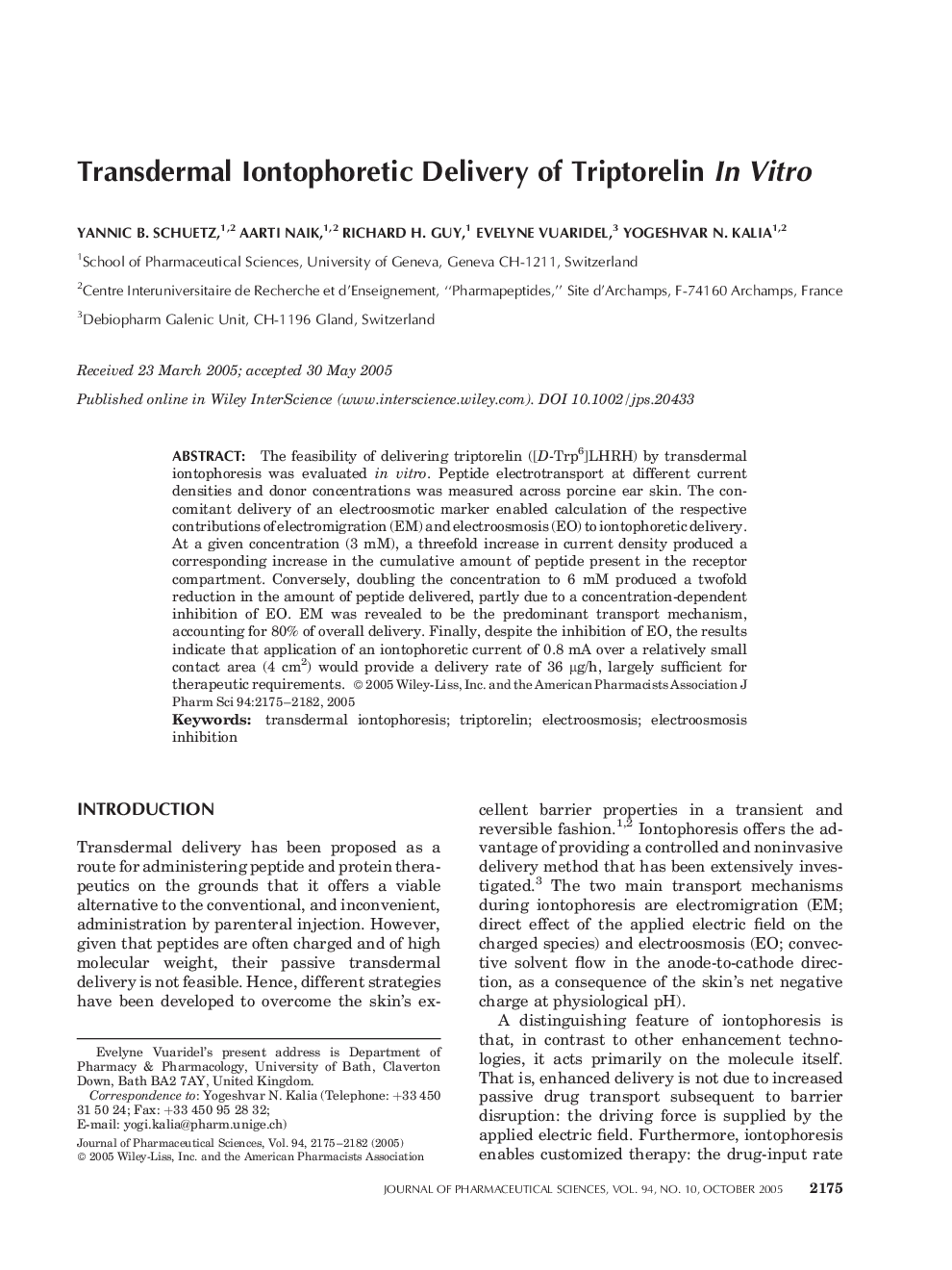| Article ID | Journal | Published Year | Pages | File Type |
|---|---|---|---|---|
| 2486517 | Journal of Pharmaceutical Sciences | 2005 | 8 Pages |
Abstract
The feasibility of delivering triptorelin ([D-Trp6]LHRH) by transdermal iontophoresis was evaluated in vitro. Peptide electrotransport at different current densities and donor concentrations was measured across porcine ear skin. The concomitant delivery of an electroosmotic marker enabled calculation of the respective contributions of electromigration (EM) and electroosmosis (EO) to iontophoretic delivery. At a given concentration (3 mM), a threefold increase in current density produced a corresponding increase in the cumulative amount of peptide present in the receptor compartment. Conversely, doubling the concentration to 6 mM produced a twofold reduction in the amount of peptide delivered, partly due to a concentration-dependent inhibition of EO. EM was revealed to be the predominant transport mechanism, accounting for 80% of overall delivery. Finally, despite the inhibition of EO, the results indicate that application of an iontophoretic current of 0.8 mA over a relatively small contact area (4 cm2) would provide a delivery rate of 36 µg/h, largely sufficient for therapeutic requirements. © 2005 Wiley-Liss, Inc. and the American Pharmacists Association
Related Topics
Health Sciences
Pharmacology, Toxicology and Pharmaceutical Science
Drug Discovery
Authors
Yannic B. Schuetz, Aarti Naik, Richard H. Guy, Evelyne Vuaridel, Yogeshvar N. Kalia,
